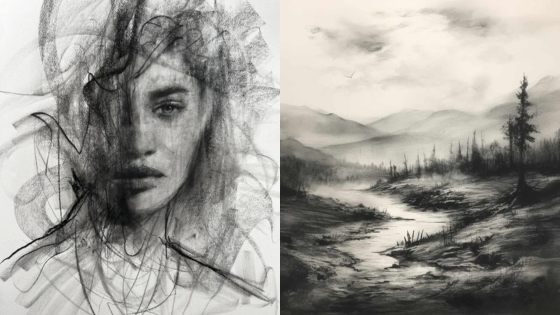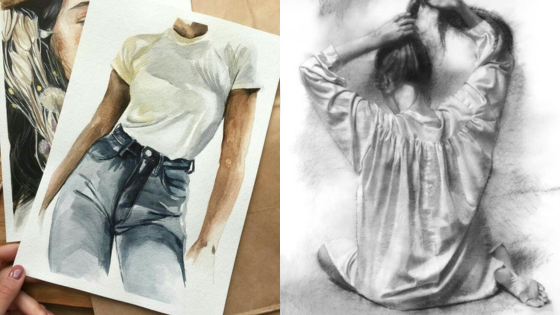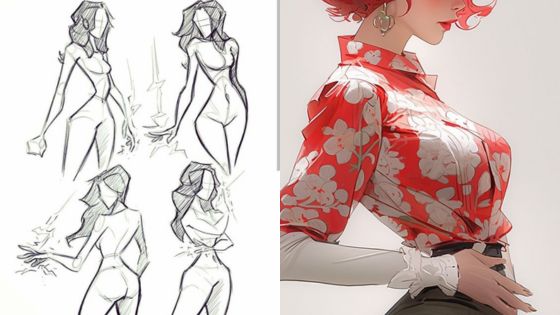In today’s media landscape, female character design plays a crucial role in storytelling. Effective design not only reflects a character’s personality but also challenges social norms and expectations. With the rise of diverse narratives, the approach to creating female characters has evolved, emphasizing authenticity and relatability.

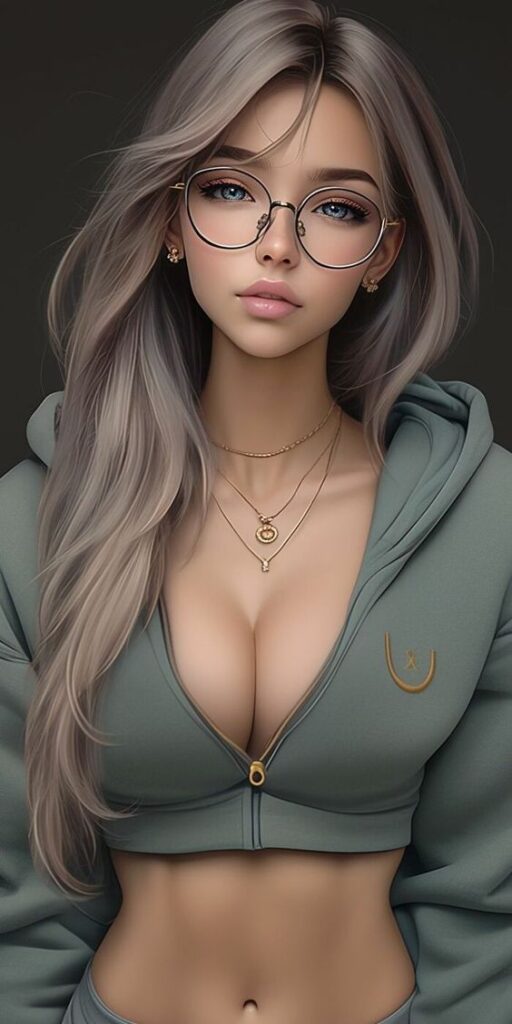
Understanding the elements that contribute to strong female character design is essential for creators. From conceptual guidelines to cultural influences, each aspect can impact how audiences perceive and connect with these characters. By focusing on fundamental principles, including body language and color theory, designers can craft memorable representations that resonate with viewers.
The significance of diversity and inclusivity in character design cannot be overstated. As societal perspectives shift, reflecting varied experiences and backgrounds becomes imperative in depicting female characters that audiences can relate to and celebrate.
Key Takeaways
- Female character design should reflect authenticity and challenge societal norms.
- Diversity and inclusivity enhance the relatability of female characters.
- Core design principles help create impactful and memorable characters.
Historical Evolution of Female Character Design
The design of female characters has changed dramatically over time. Early representations often emphasized traditional roles and specific beauty standards.
In the 19th century, illustrations in literature and art focused on femininity and domesticity. Characters were frequently depicted in elaborate dresses, symbolizing status and virtue.
The advent of cinema in the 20th century introduced more dynamic portrayals. Actresses such as Katharine Hepburn and Audrey Hepburn shaped perceptions by embodying strength and independence alongside traditional beauty.

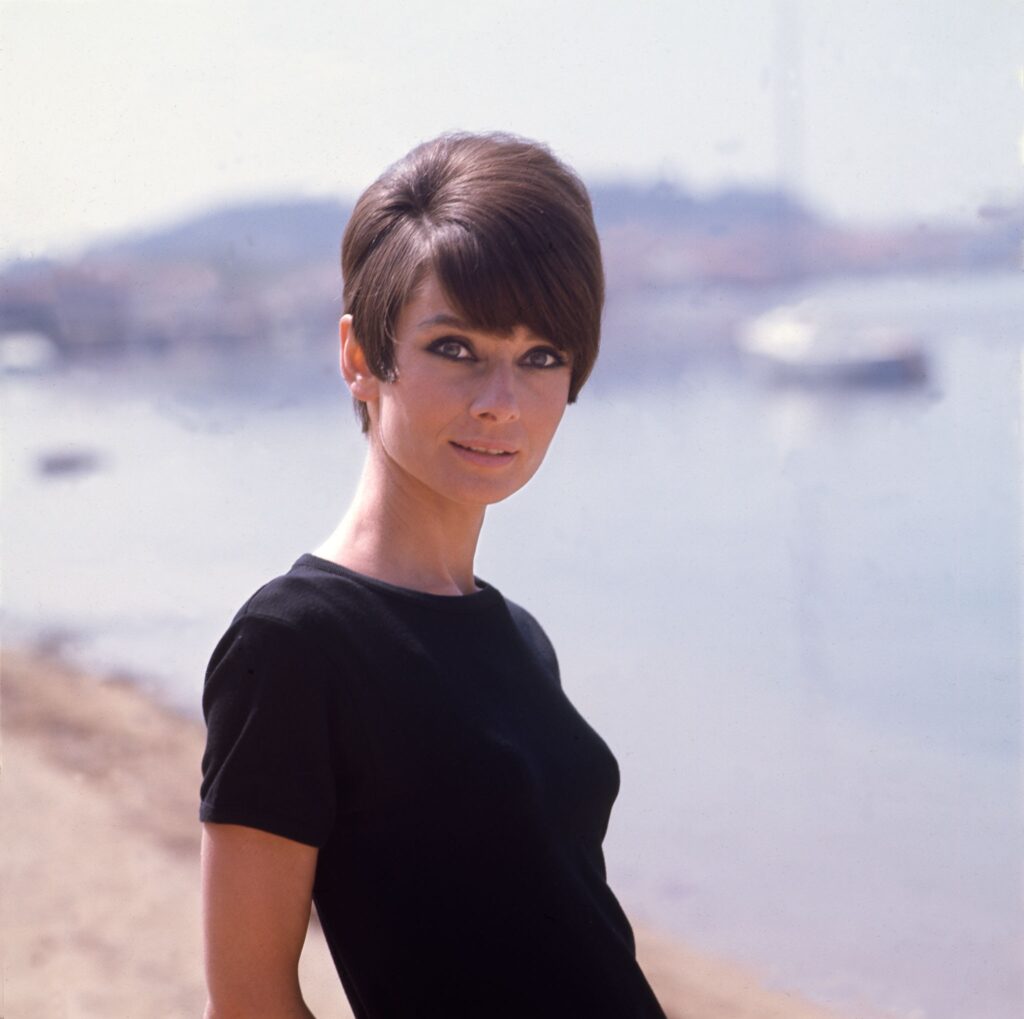
The rise of video games in the late 20th century shifted design priorities. Female characters began to showcase diverse skills and narratives, moving beyond mere aesthetics. Notable examples include Samus Aran from Metroid and Lara Croft from Tomb Raider.
In the 21st century, the focus on representation has expanded. Designers now emphasize variety in body types, ethnicities, and backgrounds. Games like The Last of Us Part II feature complex female protagonists, reflecting modern values and social issues.
Final designs continue to evolve, influenced by cultural shifts and audience expectations. Female characters are now often portrayed as multifaceted individuals, capable of driving their own stories.
Basic Principles of Character Design
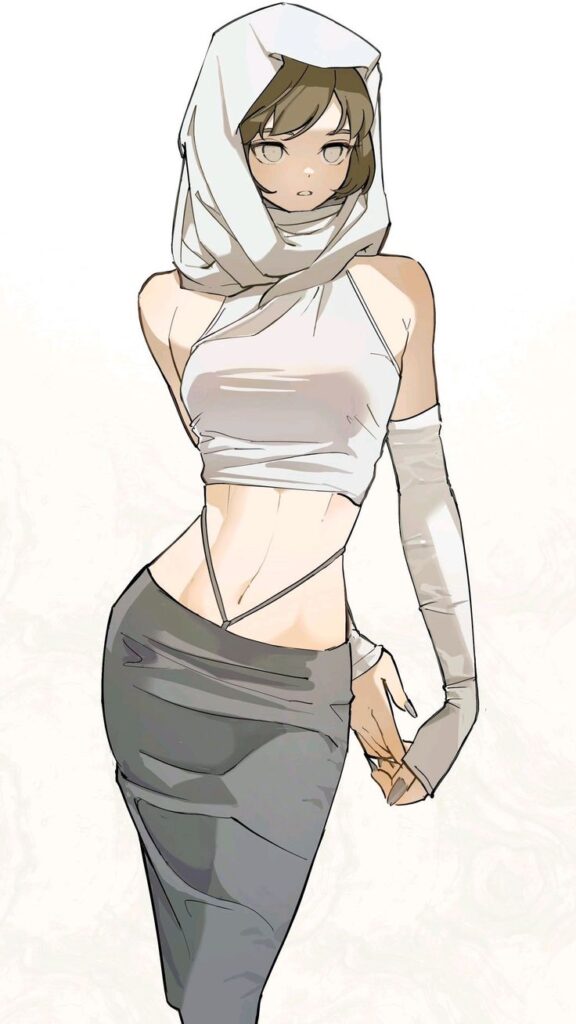
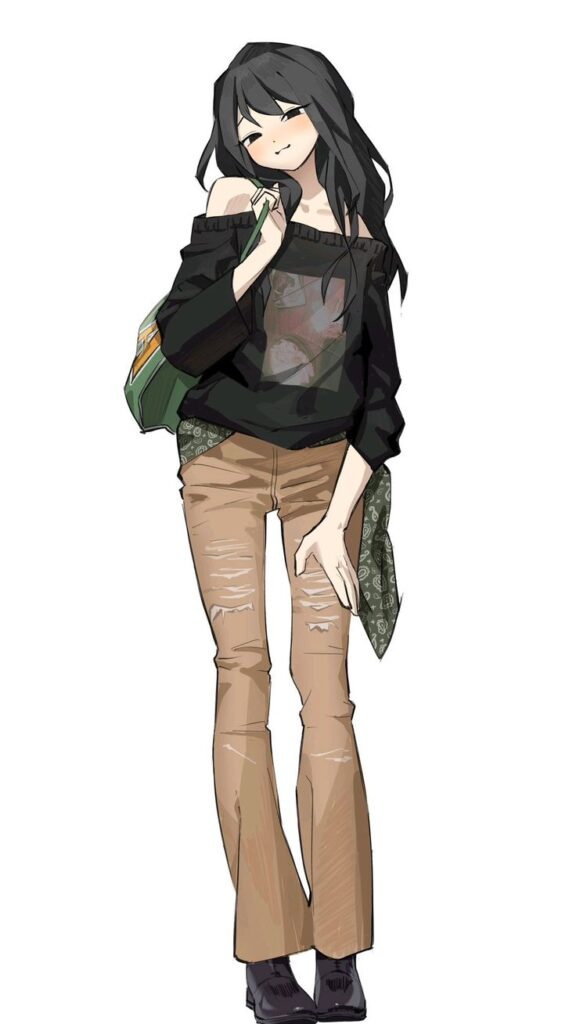
Character design involves several key principles that contribute to creating a well-rounded and relatable character. Focused attention to role, personality, and physical attributes is essential for developing female characters that resonate with audiences.
Character Role and Significance
The character’s role within the narrative is fundamental. This includes understanding whether she is a protagonist, antagonist, or supporting character.
Each role demands different characteristics. For instance, a protagonist might be depicted with traits that reflect growth and resilience, while an antagonist may showcase qualities such as cunning and aggression.
It’s important to establish how her role affects the story. Consider plotting her interactions and relationships with other characters. This ensures her design supports her significance in the narrative.
Personality and Backstory
A well-defined personality adds depth to a character. Traits like kindness, bravery, or intelligence shape how she interacts with her world.
Backstory plays a crucial role in understanding her motivations. A traumatic past might explain cautious behavior, while a nurturing upbringing could lead to compassion towards others.
Incorporating details about her struggles and achievements enriches her character. This creates a believable arc that engages the audience emotionally.
Character traits should be consistent with her experiences. This coherence aids in audience investment and understanding of her journey.
Physical Attributes
Physical attributes encompass more than just appearance; they reflect a character’s essence and can communicate aspects of her personality instantly.
Consider facial expressions, body language, and distinctive features, such as scars or tattoos, that can hint at her background. These elements should align with her role and story arc.
Clothing and style choices further establish her identity. They can indicate her social status, personal beliefs, or even her emotional state.
The design of her physical attributes must be purposeful. Each detail should enhance the viewer’s understanding of her character, making her memorable and engaging.
Influence of Culture on Female Character Design


Cultural context plays a significant role in shaping female character design. Traits such as clothing, accessories, and physical attributes reflect cultural norms and values.
For instance:
- Western Culture: Often emphasizes independence and strength. Characters may have a more athletic build, showcasing empowerment.
- Eastern Culture: Can highlight grace and balance. Designs might include more traditional attire, symbolizing heritage.
Different media reflect culture in various ways:
- Anime: Often exaggerates features like large eyes and unique hairstyles, representing distinct cultural aesthetics.
- Video Games: Female characters can embody hyper-realistic traits or fantastical elements, depending on the genre and target audience.
Designers may also consider feminist movements within cultures. Some characters are created to challenge stereotypes, breaking away from traditional representations. This can lead to diverse portrayals that resonate with modern audiences.
Cultural awareness can enhance relatability. Styles that incorporate local customs or folklore enrich the narrative.
Incorporating various cultural elements allows for broader representation. It helps create stories that connect with a wider audience, showcasing the complexity of female identities across different societies.
Costume and Wardrobe Considerations
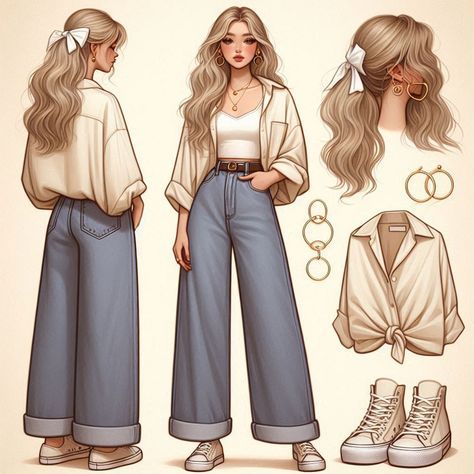
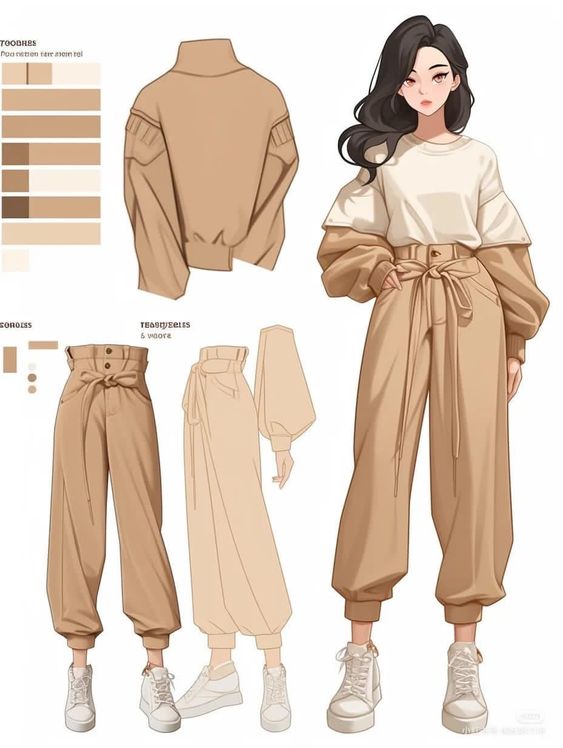
Costume and wardrobe play a vital role in shaping female characters. They reflect personality, social status, cultural background, and time period. Thoughtful design elevates the character’s presence and supports the narrative.
Cultural Accuracy
Cultural accuracy in costume design is essential for authenticity. Designers must research the cultural backgrounds of characters to ensure accurate representation. This includes understanding traditional attire, fabrics, and symbolism associated with different cultures.
For instance, a character from a specific cultural heritage should wear clothing that respects and reflects that heritage. Ignoring cultural context can lead to stereotypes or misrepresentation. Collaborating with cultural consultants can enhance accuracy and sensitivity.
Character Profession and Role
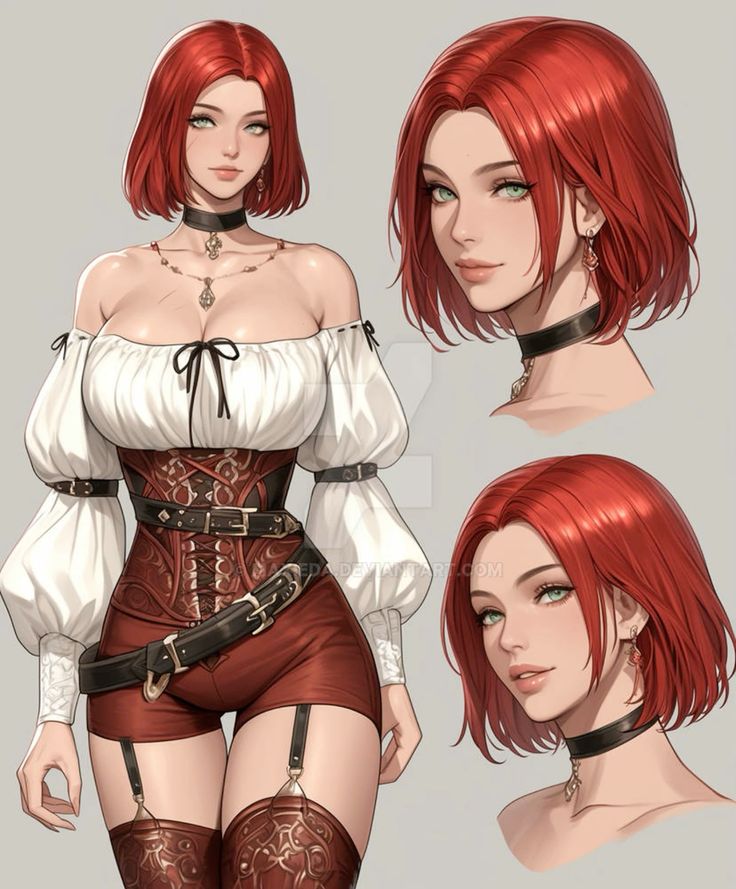
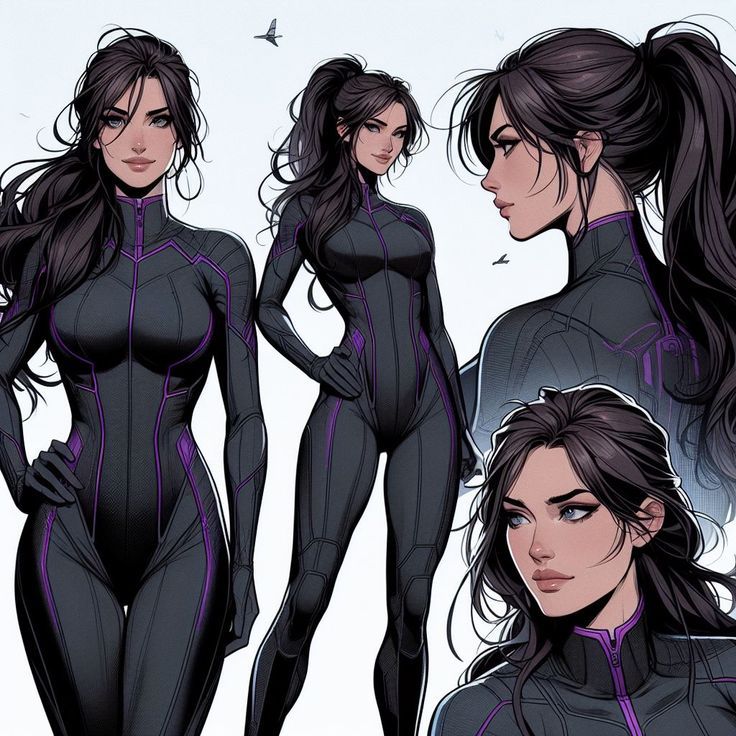
The profession and role of the character significantly influence her wardrobe. Costumes should align with her job duties and social status. For example, a doctor would wear scrubs or a lab coat, while an artist might prefer casual, paint-splattered clothing.
Details matter in professional attire too. Accessories such as tools or uniforms can visually convey a character’s skills and expertise. Choosing appropriate footwear also reinforces her role; practical shoes for a chef, elegant heels for a businesswoman.
Setting and Era
The setting and era of the narrative play a crucial role in costume design. Designs should reflect the time period and location of the story. A futuristic setting may require innovative fabrics and styles, while a historical setting demands accurate period attire.
For example, a character in a Victorian setting would wear corsets and long dresses, while a modern character could don casual wear. Attention to detail in color palettes and accessories enhances authenticity and immerses the audience in the world.
Facial Features and Expressions
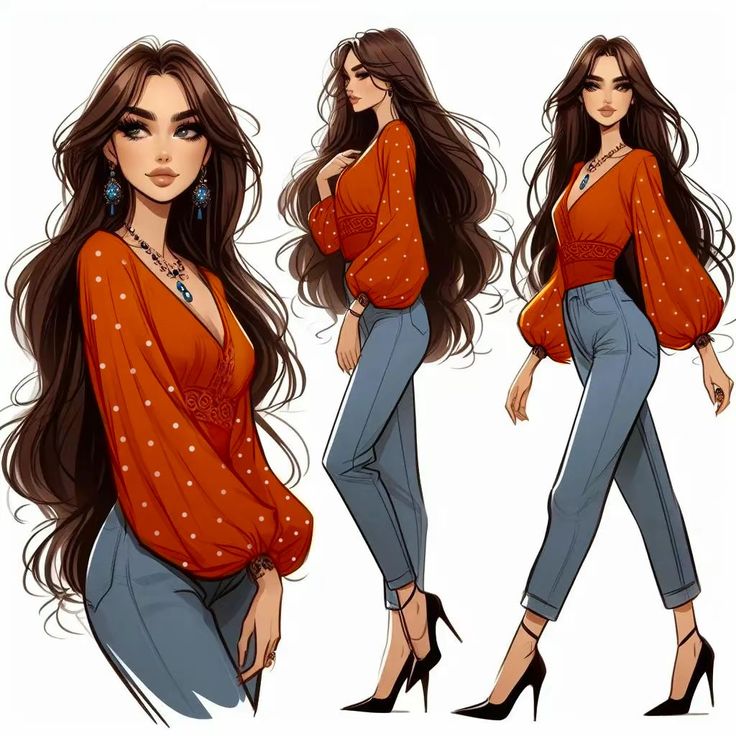
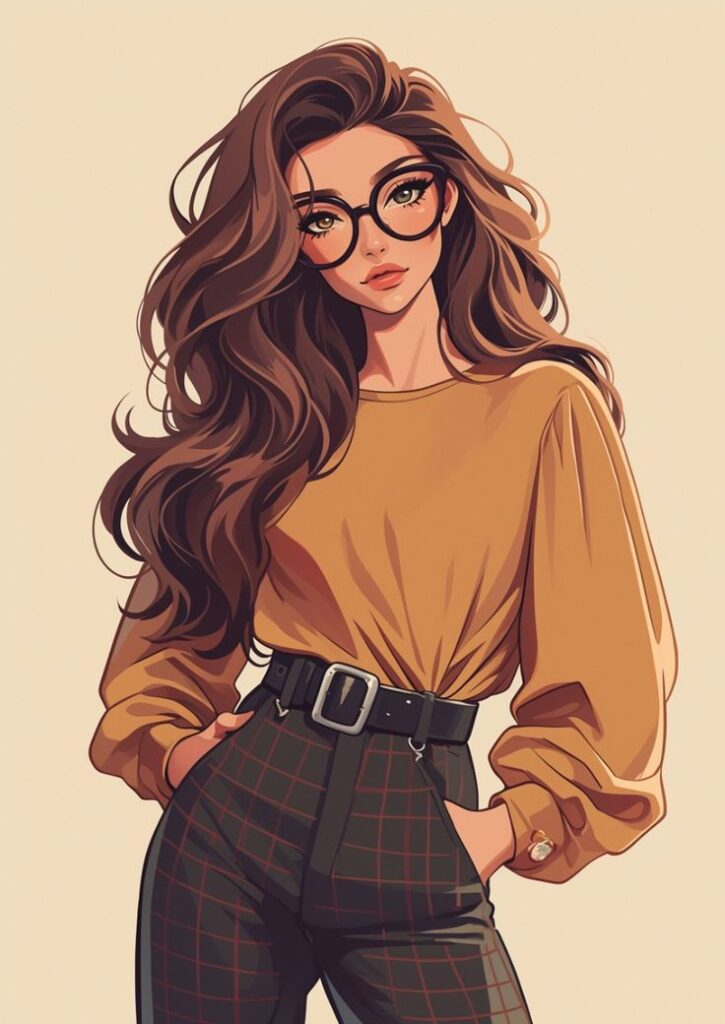
Facial features play a crucial role in female character design. They convey personality, emotions, and cultural background.
Key Features
- Eyes: Shape and size can indicate various traits. Large eyes often suggest innocence, while narrow eyes may imply cunning.
- Nose: Different styles can communicate different cultural aesthetics. A small, delicate nose may evoke femininity.
- Mouth: The shape of the lips can express a range of emotions. Full lips might indicate confidence, while thin lips can suggest reserve.
Expressions
Expressions greatly affect how a character is perceived. Certain facial expressions align with specific emotions:
- Happiness: Upturned corners of the mouth, wide eyes.
- Sadness: Downturned mouth, drooping eyelids.
- Anger: Furrowed brows, clenched jaw.
Consider Cultural Context
Cultural background can influence how certain features and expressions are interpreted. Understanding these nuances helps create relatable and authentic characters.
Consistency in Design
Maintaining consistency in facial features is essential. It ensures that expressions align with the character’s established traits and story arc.
Incorporating diverse features and expressions enriches character development and enhances storytelling. This approach fosters connection and relatability with audiences.
Body Language and Posture


Body language and posture play crucial roles in female character design. They communicate emotions, personality, and relationships without relying solely on dialogue.
- Open Posture: Suggests confidence and approachability. Shoulders back, arms relaxed.
- Closed Posture: Conveys defensiveness or insecurity. Hunched shoulders, crossed arms.
- Dynamic Posture: Indicates energy and engagement. Forward-leaning stance or a playful pose.
Facial expressions complement body language. A smile can enhance the perceived warmth of a character, while furrowed brows can indicate stress or determination.
Consider cultural context in character design. Different cultures may interpret body language in various ways. Awareness of these differences can enhance character relatability.
Key Considerations:
- Movement: Fluid movements can portray grace or agility, while stiff movements may imply hesitation.
- Gestures: Use hand gestures to emphasize speech or express internal conflict. Subtle movements can suggest complex emotions.
- Eye Contact: Varying eye contact can express confidence, intrigue, or shyness. Intense eye contact may indicate assertiveness.
Incorporating these elements allows for a multifaceted and believable character. Body language and posture should align with the character’s personality, backstory, and role in the narrative.
Color Theory and Character Design

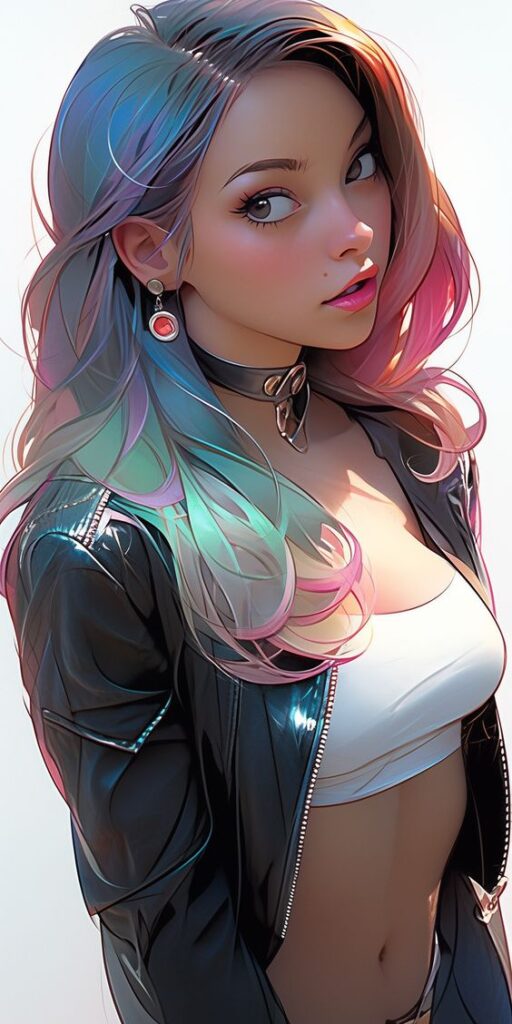
Color theory plays a crucial role in character design, influencing how a character is perceived and connecting with the audience. Applying color psychology, carefully selecting palettes, and ensuring contrast and harmony can enhance a character’s appeal and narrative.
Color Psychology

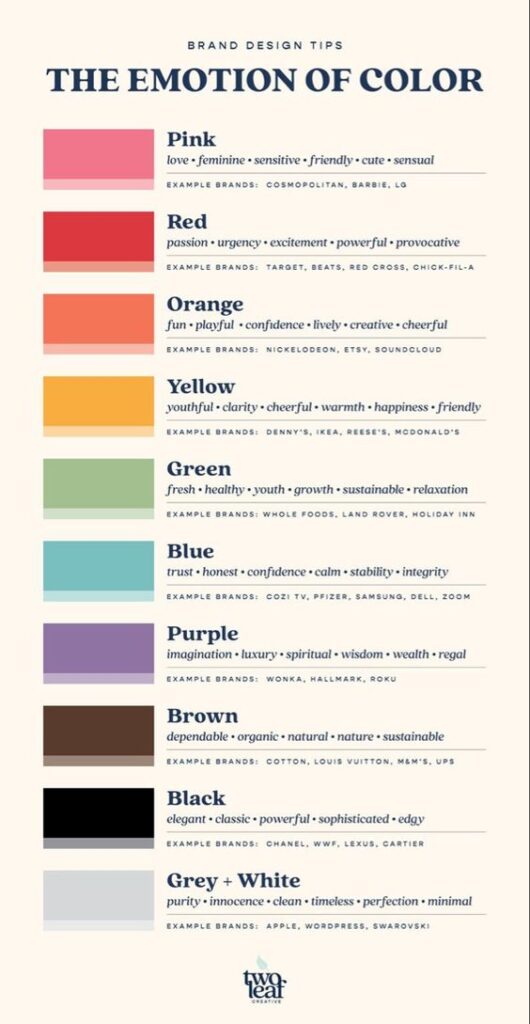
Color psychology examines how colors evoke emotions and convey messages. For female character design, specific colors can communicate traits like strength, vulnerability, or intelligence.
- Red can symbolize passion or danger.
- Blue often represents calmness and reliability.
- Green may indicate growth or envy.
Choosing colors that align with a character’s personality can deepen the audience’s emotional engagement and understanding, influencing their perception and connection with the character.
Palette Selection
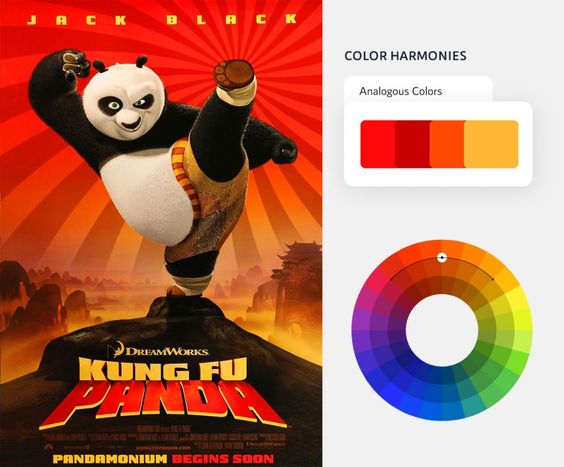
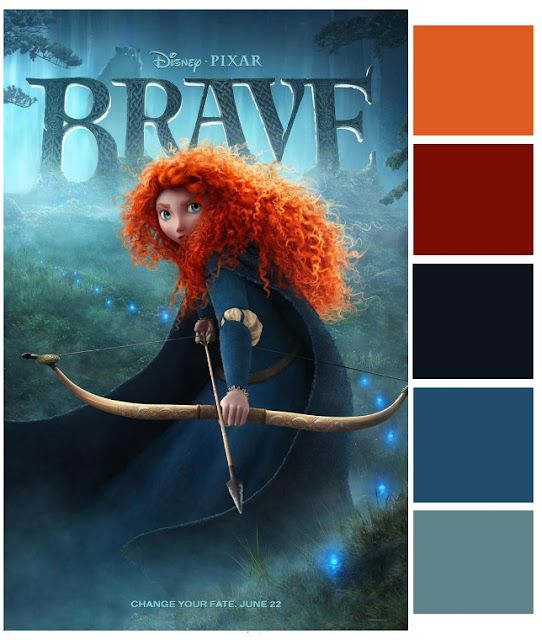
Palette selection involves choosing a range of colors that work well together to create a cohesive look. Effective palettes often consist of a primary color with secondary and accent colors that complement it.
- A monochromatic palette utilizes variations of one color, providing a subtle look.
- A complementary palette employs opposing colors for visual interest.
Considering cultural connotations of each color is vital, as meanings can differ by context. This selection process not only shapes a character’s identity but also enhances storytelling.
Contrast and Harmony
Contrast and harmony in color can significantly impact a character’s presence. High contrast draws attention and can indicate a strong personality or a pivotal role in the story.
- Dark colors paired with light colors create visual tension that can highlight conflict.
- Analogous colors, next to each other on the color wheel, promote harmony and can suggest traits like warmth or approachability.
Striking the right balance ensures a character stands out while maintaining visual coherence, allowing for a more effective representation of their role in the narrative.
Anatomy and Proportions
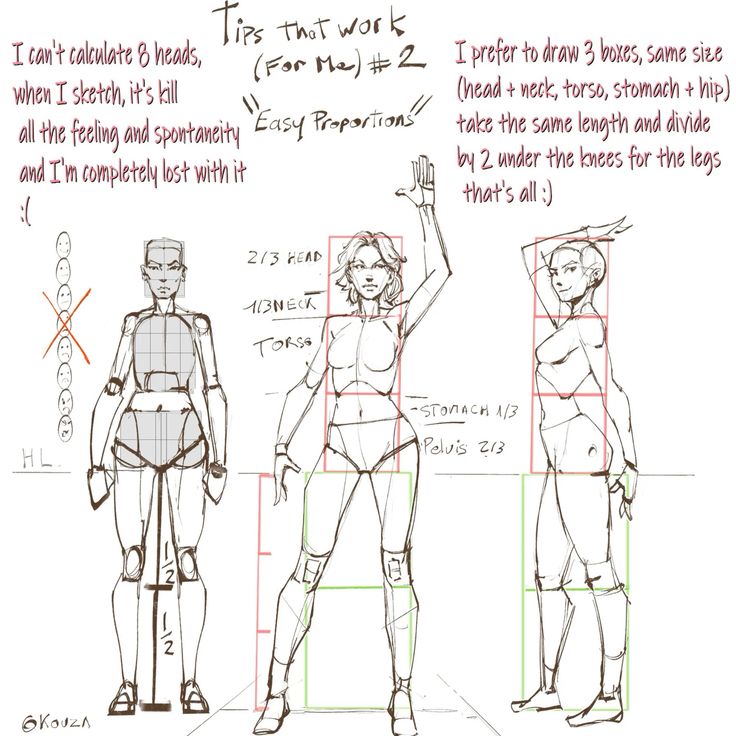
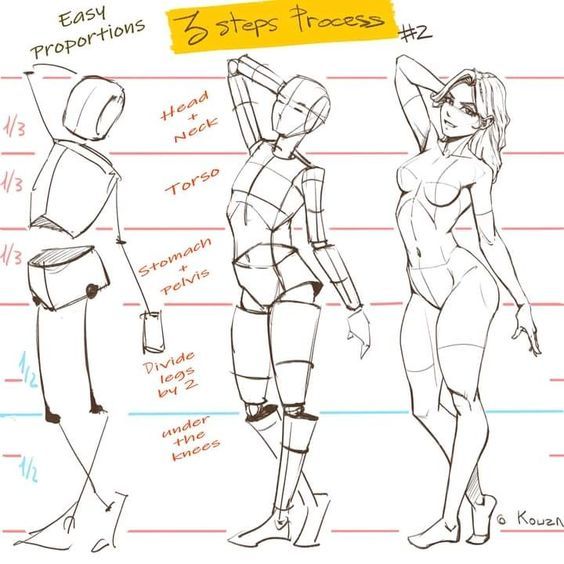
When designing female characters, understanding anatomy and proportions is essential. Accurate representation can enhance credibility and relatability.
Key Proportions
- Head Size: Generally, the head is about 1/8th of the total height.
- Torso: The torso should be approximately half of the character’s height.
- Legs: Legs often comprise around 50% of total height, emphasizing elongation.
Body Ratios
An effective method for body proportions is the use of the Golden Ratio. This helps create aesthetically pleasing figures.
Example Ratios:
| Body Part | Ratio to Body Height |
|---|---|
| Head | 1/8 |
| Torso | 1/2 |
| Legs | 1/2 |
| Arms | 1/2 |
Differences in Design
Artists may choose to exaggerate or stylize proportions. This could enhance certain traits specific to the character’s personality.
Characters might adopt various shapes, such as:
- Curvy: Emphasizes softer, rounded lines.
- Athletic: Highlights muscle definition and strength.
- Slim: Focuses on elongated and linear forms.
Considerations
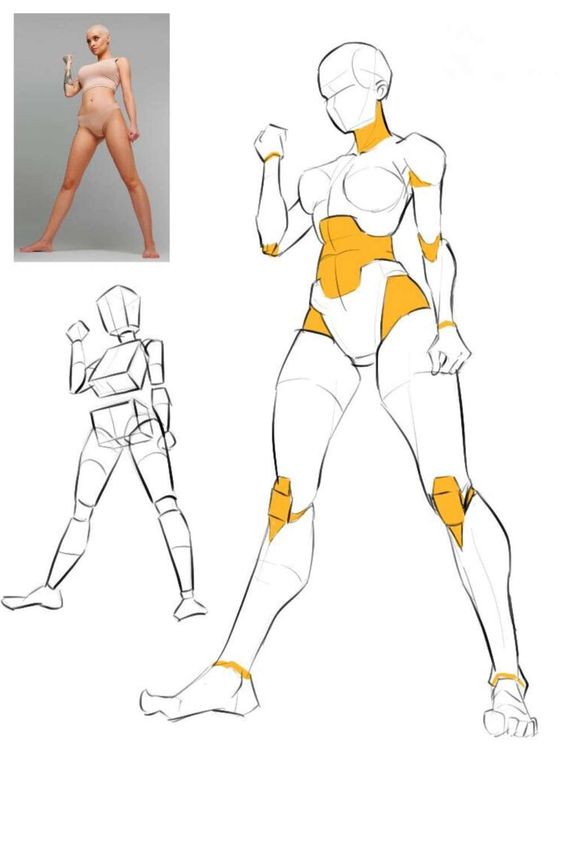

Cultural influences play a significant role in character design. Understanding the target audience may affect proportion choices.
Maintaining balance and harmony in design can lead to more engaging character representations.
Digital Tools and Software
Digital tools and software play a crucial role in female character design. They provide designers with various capabilities to create detailed and engaging characters.
Commonly Used Software:
| Software | Features |
|---|---|
| Adobe Photoshop | Raster graphics, extensive brushes, layering |
| Adobe Illustrator | Vector graphics, scalability, clean lines |
| Clip Studio Paint | Excellent for comics and illustrations |
| Procreate | Touch-based interface, strong brush engine |
| Blender | 3D modeling, animation, intricate detailing |
Popular Tools:
- Drawing Tablets: Essential for precise digital illustrations. Brands like Wacom and Huion are widely used.
- 3D Software: Applications such as ZBrush and Maya allow for sculpting and rendering complex designs.
- Color Palettes: Tools like Coolors help in selecting harmonious color schemes.
Advantages of Digital Tools:
- Flexibility: Designers can easily edit and refine their work.
- Efficiency: Rapid iterations allow for quick exploration of ideas.
- Accessibility: Many tools have user-friendly interfaces suitable for beginners and professionals alike.
Utilizing a combination of these tools enhances the creative process and leads to more diverse and compelling character designs.
Artistic Style and Aesthetics
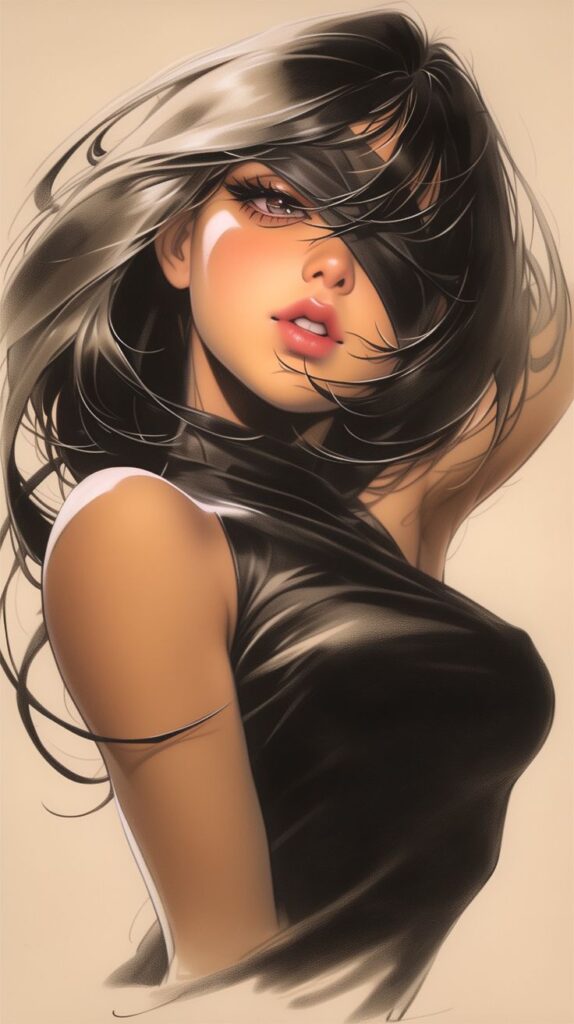
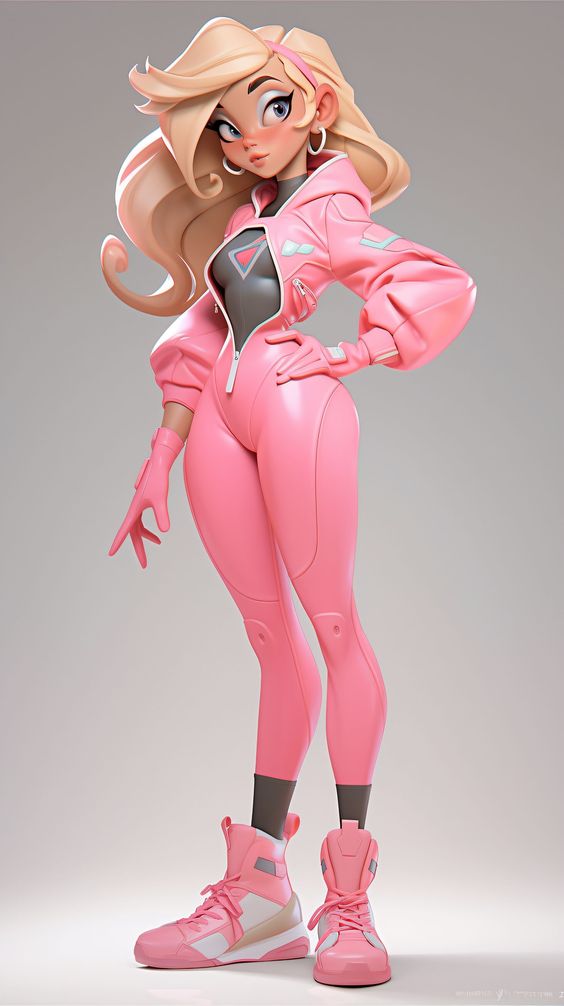
Artistic style and aesthetics play crucial roles in female character design, impacting how characters are perceived and connect with audiences. Factors such as realism versus stylization, the media used for creation, and visual storytelling techniques shape the effectiveness of designs.
Realism vs. Stylization
Realism in female character design aims to create lifelike representations, often emphasizing human anatomy, proportions, and facial expressions. Artists may reference real-world models to achieve authenticity.
In contrast, stylization involves exaggerating or simplifying features to evoke specific emotions or fit a certain theme. This approach allows for more creative freedom, enabling artists to depict characters in unique ways. Balancing these two elements can lead to designs that resonate deeply with audiences, impacting relatability and emotional engagement.
Media and Technique
Various media and techniques significantly influence the aesthetic of female character designs. Traditional methods may include pencil sketching, painting, or mixed media, while digital tools allow for extensive editing and layering.
Each medium offers distinct textures, colors, and finishes. For example, digital art can easily incorporate vibrant colors and intricate details, appealing to modern audiences. Moreover, the technique used, such as 3D modeling versus 2D illustration, shapes how characters are animated and perceived in different contexts.
Visual Storytelling
Visual storytelling is integral to the effectiveness of female character design. The design itself conveys aspects of a character’s personality, background, and emotional state.
Elements such as color palettes, clothing choices, and facial expressions all contribute to this narrative. For instance, bold colors may indicate strength or confidence, while muted shades might suggest vulnerability. Furthermore, poses and body language can imply action or emotion, making it essential for designers to consider how their creations communicate stories beyond dialogue.
Incorporating cohesive aesthetics with thoughtful storytelling leads to characters that are both memorable and impactful.
Designing for Different Media
Each medium presents unique challenges and opportunities for female character design. Understanding the specific requirements of video games, animation, and comics helps create compelling characters suited to their respective platforms.
Video Games
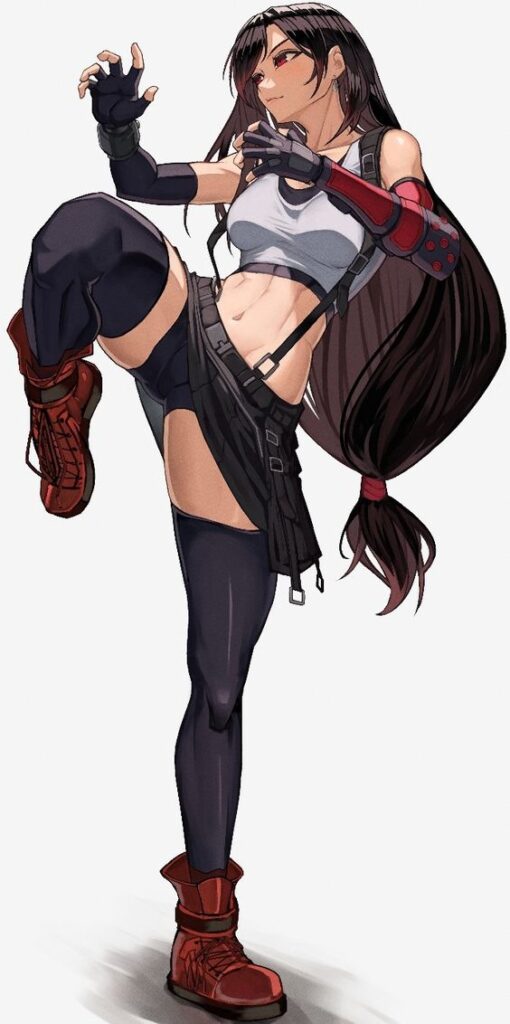

Female characters in video games must balance visual appeal with functionality. Players often expect characters to reflect the game’s setting and narrative. Designers pay close attention to proportions, accessories, and color palettes that fit within the game world.
Animation plays a significant role in character design here. Characters need a distinct silhouette for quick recognition in gameplay. Designers often create multiple outfits to allow customization, enhancing player engagement.
Furthermore, the portrayal of female characters should avoid stereotypes, instead presenting them with strengths that resonate with the audience. Incorporating diverse body types and ethnicities adds depth and relatability.
Animation
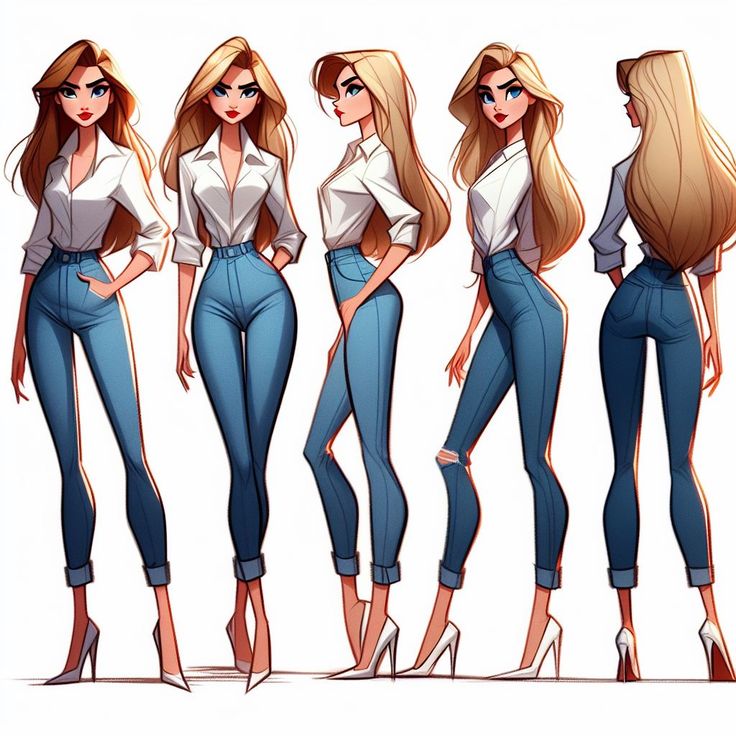
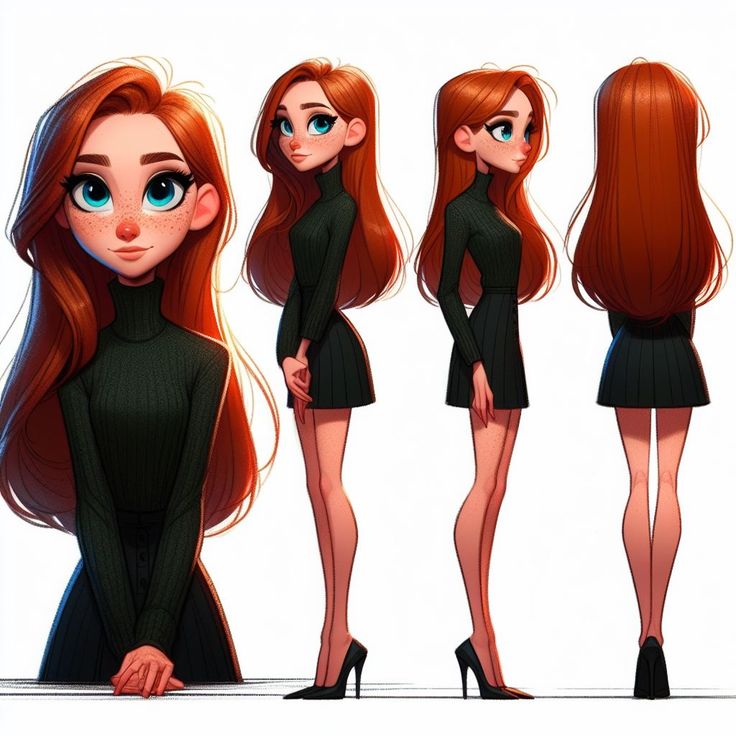
In animation, the character’s personality must shine through their design. Key elements include facial expressions, body language, and movement styles that convey emotions effectively. Designers prioritize line quality, shapes, and color schemes that reflect the character’s traits.
For female characters, maintaining a balance between beauty and realism is essential. Over-exaggeration can detract from audience connection. It’s crucial to consider how the character’s design influences storytelling and visual rhythm.
Collaboration with animators is vital. Designs must be versatile for different scenes and emotions. Clear documentation of design principles helps ensure consistency throughout the animation process.
Comics and Graphic Novels
Comics and graphic novels allow for a blend of detailed visuals and narrative depth. Female character design here needs to effectively convey personality through static images. Line work, shading, and color are essential in establishing mood and character traits.
Facial expressions are crucial; they should communicate emotions without needing extensive dialogue. Designers often create distinct hairstyles and outfits to differentiate characters and make them memorable.
It’s important to consider pacing in panel layout. Characters may need to show movement or emotion across multiple frames. A well-designed character should maintain visual integrity while adapting to various scenes and actions throughout the story.
Diversity and Inclusivity in Character Design

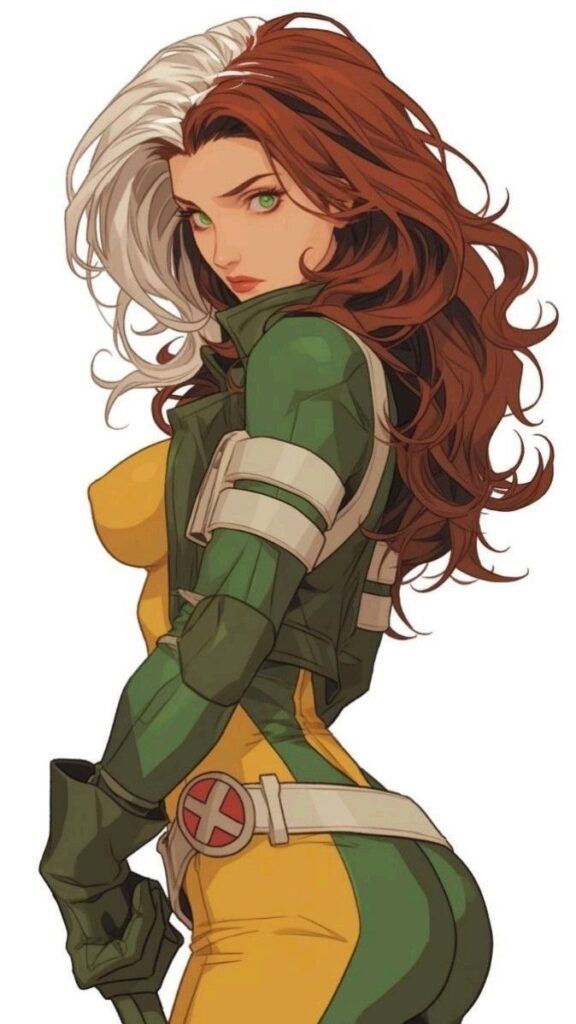
Diversity and inclusivity are essential components of modern character design. They allow creators to reflect a broader range of human experiences. This creates opportunities for connection and relatability.
Representation matters. It acknowledges various cultures, identities, and backgrounds. Consider the following aspects when designing diverse characters:
Cultural Representation: Characters should portray different ethnicities and cultures authentically. Research and consultation can ensure accuracy.
Body Diversity: Include various body types, sizes, and abilities. This fosters acceptance and broader appeal among audiences.
Gender Identity and Expression: Characters can represent the spectrum of gender identities. This provides visibility and validation to marginalized communities.
Age Representation: Emphasizing characters of different ages can enhance storytelling. It reflects the realities of life experiences.
Incorporating diverse characters benefits narratives. It enriches stories and opens discussions about important societal issues.
Here are a few examples of successful characters reflecting diversity:
| Character | Representation Type |
|---|---|
| Moana | Polynesian Culture |
| Miles Morales | Afro-Latino Spider-Man |
| Garnet | Non-binary Fusion Gem |
| Sadness | Emotional Diversity |
Incorporating diversity strengthens character design and enriches the audience’s experience.
Ethics and Responsibility in Female Representation
Creating female characters involves ethical considerations that impact how society views gender roles. It is crucial to avoid stereotypes that can perpetuate harmful perceptions.
Key Considerations:
Authenticity: Female characters should reflect diverse experiences and backgrounds. Authenticity allows audiences to connect and empathize.
Agency: Characters must possess their own goals and motivations. This agency helps to present women as complex individuals rather than mere plot devices.
Visual Representation: Careful attention to design elements—such as clothing and posture—can influence how characters are perceived. They should not reinforce outdated or unrealistic standards.
Intersectionality: Recognizing the various social identities that intersect with gender is vital. Female representation should include different races, ethnicities, and sexual orientations.
The creators bear responsibility for the characters they design. This includes being aware of the potential impact their work can have on societal attitudes.
Best Practices:
- Research: Explore various cultures and perspectives to inform character design.
- Feedback: Engage with diverse audiences during the design process to gain insights.
- Accountability: Acknowledge and correct missteps in representation.
Addressing these factors fosters a more inclusive and respectful portrayal of female characters in media.
Criticism and Reinterpretation of Female Characters
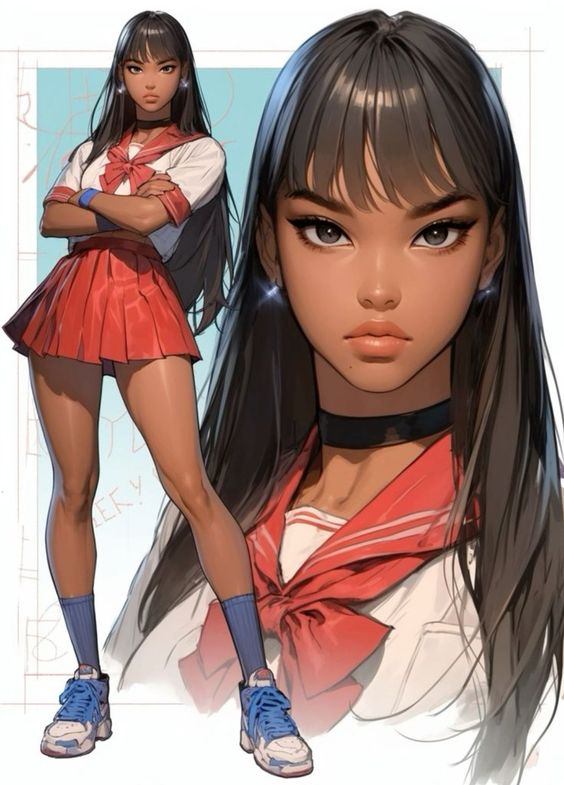

Criticism of female character design often stems from stereotypes and lack of depth. Characters may be portrayed primarily through the lens of their physical appearance or relationships to male characters.
Common Critiques
- Sexualization: Many female characters are designed to appeal to male fantasies, leading to unrealistic body standards.
- Lack of Agency: Often, female characters are relegated to supportive roles, lacking their own story arcs or motivations.
- Stereotypical Traits: They may be portrayed as overly emotional or dependent, reinforcing outdated stereotypes.
Reinterpretation aims to address these issues. Creators increasingly strive to design female characters with more complexity and agency.
Approaches to Reinterpretation
- Empowered Narratives: Bringing female characters to the forefront of their own stories.
- Diverse Representation: Including a wider range of backgrounds, abilities, and personalities.
- Realistic Design: Focusing on body diversity and relatable traits.
These changes lead to richer storytelling. Female characters become essential drivers of narrative rather than mere decorations. The focus shifts from traditional portrayals to multifaceted individuals, opening up new possibilities in media.
Future Trends in Female Character Design
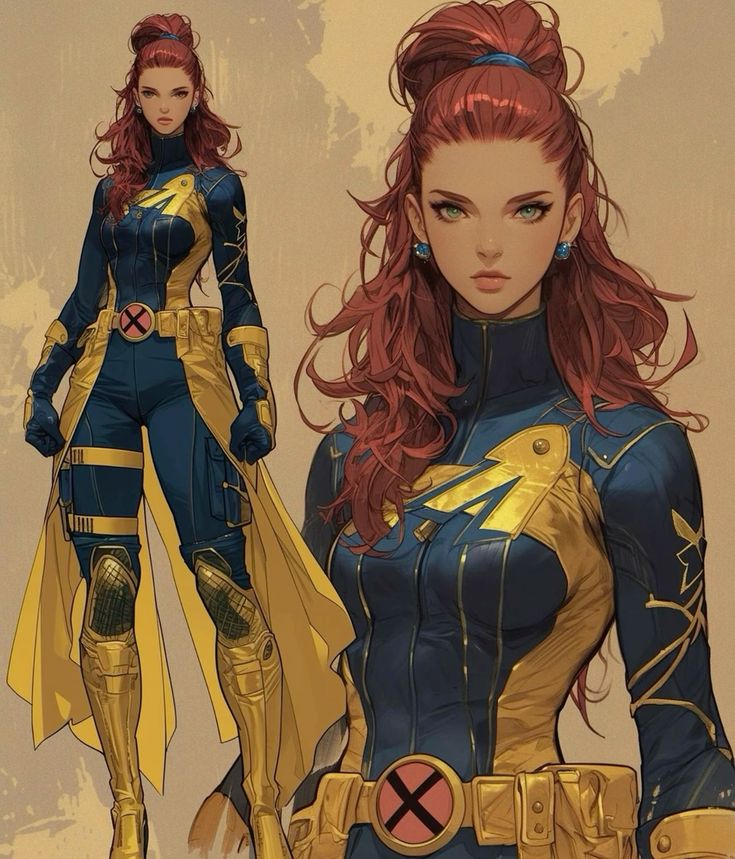

The future of female character design is evolving with an emphasis on diversity and authenticity. Designers are increasingly focusing on creating characters that reflect a wide range of backgrounds, body types, and personalities.
Key Trends:
Inclusivity in Representation: Characters will showcase various ethnicities, genders, and abilities. This enhances relatability and reflects real-world diversity.
Complex Personalities: Designs will incorporate multifaceted traits. Characters will exhibit strengths, vulnerabilities, and flaws.
Realism in Proportions: There is a shift towards realistic body proportions. This trend challenges the stereotypical, hyper-sexualized portrayals commonly seen in media.
Sustainable Design Choices: Eco-conscious design is gaining traction. Materials and methods that prioritize sustainability will influence character costumes and settings.
Cultural Influence: Traditional and contemporary cultural elements will be blended. Characters will draw inspiration from various myths, legends, and folklore, promoting cultural appreciation.
As technology advances, virtual reality (VR) and augmented reality (AR) will allow for more interactive and immersive character experiences. Designers will experiment with how characters engage with audiences in these environments.
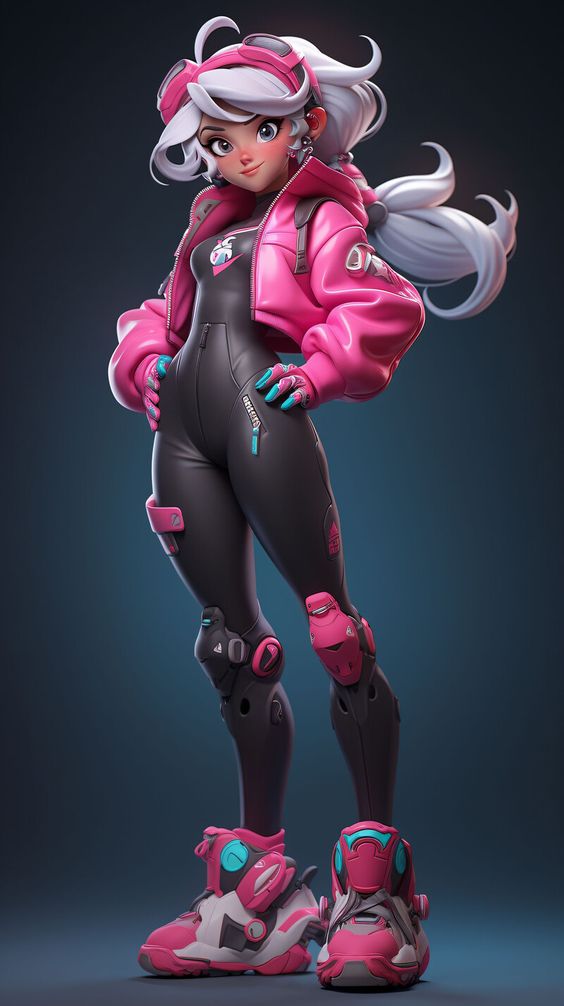

By incorporating these trends, the landscape of female character design will become richer and more inclusive, creating deeper connections with audiences.
- 4.5Kshares
- Facebook0
- Pinterest4.5K
- Twitter0

